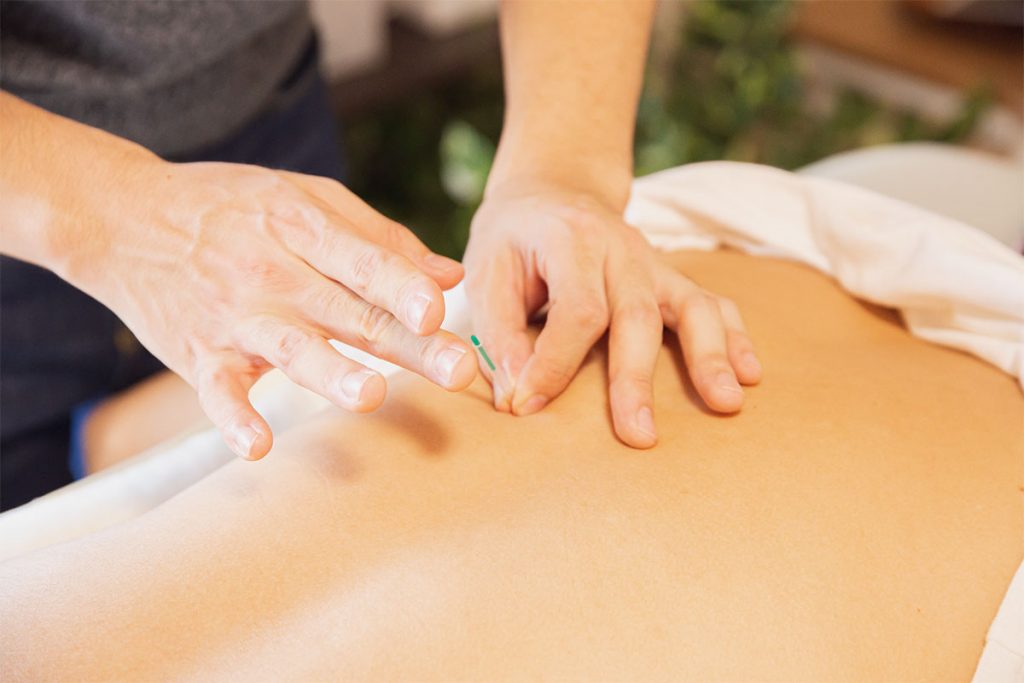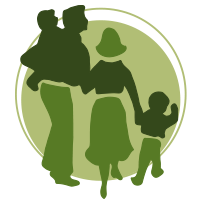
Acupuncture and dry needling
We offer both Chinese acupuncture and Dry Needling at Luck’s Yard.
Elaine Williams practises the Chinese Medicine model of acupuncture and our Chiropractors Laura Hack and Dan Andrew offer dry needling/medical acupuncture.
Here we outline Chinese Acupuncture and explain the differences between the two disciplines:
What is acupuncture?
There are different styles of acupuncture. These can be divided into three broad categories: traditionally based systems of acupuncture, western medical acupuncture also known as dry needling, and microsystems: eg, ear acupuncture.
Traditional styles of acupuncture utilise an understanding of health and illness that has developed for over 2000 years. In traditional acupuncture there is no division between the workings of the mind and body. In other words, the physical, emotional and mental aspect of life are seen as interdependent. The mind-body is seen as a system and understanding the relationship between the various parts is central to making a diagnosis and treatment plan. The focus is on the whole individual rather than a particular sign or symptom in isolation. In practice this means when treating headache, for example, an acupuncturist may wish to understand whether there are any problems with the digestion. If there are problems, this will change the diagnosis and result in the selection of different acupuncture points.
What are the benefits
A lot of people seek acupuncture to help relieve specific conditions, especially pain conditions such as tension headaches, migraines, neck or back pain, osteoarthritis of the knee and temporomandibular joint pain (jaw). Clinical trials have shown that acupuncture does relieve these symptoms, at least in the short term. For some painful conditions the benefits have been shown to last at least a year.
How it works
It is this theory which a traditional acupuncturist will use to understand your condition and to select the appropriate points. This theory uses the concept of ‘qi’ or energy. For example, when somebody is in pain, this is considered to be a blockage in flow of qi. A traditional acupuncturist will select points along the meridian or energy pathway that is affected in order to encourage the qi to flow more freely. An acupuncturist may choose points on the body to bring the qi back into balance.
The overall aim is to direct the flow of qi to trigger your body’s healing response and to restore physical, emotional and mental equilibrium. Treatment is designed to affect your whole being as well as your symptoms so, as the condition being treated improves, you may notice other health problems resolve and an increased feeling of wellbeing.
Where are the acupuncture points?
Most acupuncture points are located at places along interconnected pathways, meridians, that map the whole body, including the head, torso and limbs.
There are also the ‘extra points’ which are not associated with a particular meridian. In practice any point on the body can be an acupuncture if there is pain. These are call a-shi points, which means ‘ah that’s it’ in Chinese. The most commonly used acupuncture points are on the lower arms and legs.
Does acupuncture hurt?
Generally it should not be painful.
However, It is normal to feel a mild tingle or dull ache as the acupuncturist adjusts the needle. If you do feel in any discomfort please inform your acupuncturist who will able to adjust or remove that particular needle. Acupuncture needles are so fine that many people don’t feel them being inserted. While the needles are in place, many people feel relaxed.
Are there any side effects?
As acupuncture involves the insertion of needles, there may sometimes but a small bruise where the needle was inserted. Occasionally people may feel dizzy or tired after a treatment but this passes quickly.
To help your acupuncturist ensure that there are no unwanted side effects, please advise them of any medications you are taking such as anti-coagulants. Also let them know if the room feels hot or stuffy.
For further information you can discuss your requirements with our Acupuncturist, Elaine Williams who will be happy to explain her treatments to you and how you may benefit from acupuncture.
Elaine practises both TCM and Five Element styles of acupuncture, along with oriental head and face massage.
What is the difference between dry needling and Chinese acupuncture?
During traditional Chinese acupuncture session, needles are inserted into points along meridian lines. These lines represent the body’s organs, and they are based on ancient Chinese medicine. Acupuncture is based on the idea of balance and restoring proper flow of energy throughout the body. Needles are usually left in place for 15 to 30 minutes. It is most often used to treat internal ailments, including digestive problems, insomnia, stress and chronic pain.
Dry Needling, also known as Medical Acupuncture is used as a treatment to reduce the pain in many acute and chronic muscle conditions. Needles are inserted into trigger points, or tender bands of muscle located within larger muscles.
It can also be effective in stimulating tissue repair and reduced pain in chronic tendon problems, for example tennis elbow or pain in the achilles tendon.
When treating muscular pain thin needles (like those used in acupuncture) are inserted into the trigger points that are found in muscles. A thin microfilament needle penetrates the skin and treats underlying muscular trigger points for the management of neuro-musculoskeletal pain and movement impairments.
Acupuncture vs Dry Needling
The needle is the same/similar. acupuncture uses ancient Chinese methodology that aims to redirect energy of the body through meridians (acupressure points). Dry needling works on the principle of reducing inflammation and tension.
Trigger points can be described as areas of tension in the muscle that are ‘over-reacting’ resulting in pain.
Once the needle is inserted at the trigger point the muscle will relax and thus pain is reduced.
Dry needling can also be used to reduce pain around the tendons by triggering an anti-inflammatory response thus stimulating healing around the area of the tendon which may help to improve the structure and strength of collagen fibres.
Laura Hack says: ‘Dual modality treatment (ie chiropractic and dry needling) allows the greatest benefit over time. These practices are designed to release tension, improve mobility as well as prompt the natural healing response, which can aid optimal health. It also activates your parasympathetic nervous system which helps you to relax’.
Read more about chiropractic here: https://www.lucksyardclinic.com/services-and-treatments/chiropractic/



